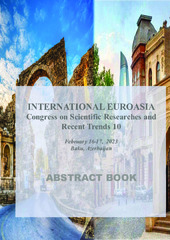Приказ основних података о документу
LUNGWORM INFECTION OF SMALL RUMINANT IN BELGRADE AREA
| dc.creator | Pavlović, Ivan | |
| dc.creator | Bojkovski, Jovan | |
| dc.creator | Caro Petrović, Violeta | |
| dc.creator | Tasić, Aleksandra | |
| dc.date.accessioned | 2023-11-28T08:27:08Z | |
| dc.date.available | 2023-11-28T08:27:08Z | |
| dc.date.issued | 2023-02 | |
| dc.identifier.isbn | 978-625-6404-90-8 | |
| dc.identifier.uri | http://r.istocar.bg.ac.rs/handle/123456789/963 | |
| dc.description.abstract | The grazing diet allows the permanent contact of small ruminants with intermediate hosts and the eggs and larval forms of the parasite. From these reason parasitic infections are present worldvide in a large number of herds. Lungworms of domestic ruminants are nematodes that belongs to the phylum Nemathelmenthes commonly named as round worms; classified under the super family Trichostrongyloidea and Metastrongyloidea of which Dictyocaulus and Protostrongylus are causes of lungworm infection in ruminants. They induce verminous pneumonia which was a significant health problem of small ruminant. Due to their importance in the pathology of small ruminants, in 2020 we conducted a survey of their presence in the Belgrade area. Investigations included 23 herds. In total, 250 fecal samples were examined by the Berman method. Determination of parasites was based on its morphological characteristics. Dictyocaulus filaria was ocurerd at 23.20% of small ruminants heards. The highest prevalence is observed in the places where predominate flat plain pastures. Due to microclimatic conditions, the infection usually occurs in the period April-May when the largest number of animals are grazing. Clinically manifested disease occurs in kids and lambs that are grazed for the first time in the second half of the grazing season. Protostrongylinae are biohelminthes and need intermediate hosts for their development - snails and slugs. Due to microclimatic conditions, the infection usually occurs in the March and April when the largest number of intermediate host are preset at pasture. Protostrongylus rufescens occurred on 21.22%. These nematodes live in bronchioles and alveoli. The prevalence ranges was from 4.23%. Based on the results obtained, we can conclude that a large number of sheep and goats in Belgrade are infected with pulmonary strongilides. Dictyocaulus filaria and Protostrongylus rufescens are the dominant species, while Muellerius capillaris are present in a smaller percentage. | sr |
| dc.language.iso | en | sr |
| dc.publisher | Baku Euroasian University & IKSAD Institute | sr |
| dc.rights | openAccess | sr |
| dc.rights.uri | https://creativecommons.org/licenses/by/4.0/ | |
| dc.source | INTERNATIONAL EUROASIA Congress on Scientific Researches and Recent Trends 10 | sr |
| dc.subject | small ruminants; | sr |
| dc.subject | Belgrade area; | sr |
| dc.subject | Dictyocaulus filaria; | sr |
| dc.subject | Protostrongylus rufescens | sr |
| dc.title | LUNGWORM INFECTION OF SMALL RUMINANT IN BELGRADE AREA | sr |
| dc.type | conferenceObject | sr |
| dc.rights.license | BY | sr |
| dc.citation.spage | 167 | |
| dc.citation.epage | 168 | |
| dc.identifier.rcub | https://hdl.handle.net/21.15107/rcub_ristocar_963 | |
| dc.identifier.fulltext | http://r.istocar.bg.ac.rs/bitstream/id/4537/bitstream_4537.pdf | |
| dc.type.version | publishedVersion | sr |


